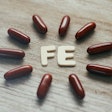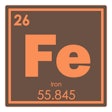Eating more fruits and vegetables rich in specific micronutrients may improve gum health by reducing pocket depth and clinical attachment loss (CAL). This study was published on November 12 in BMC Oral Health.
In contrast, higher sodium and vitamin K consumption may be associated with increased plaque buildup, the authors wrote.
“This study highlights the complex relationship between dietary micronutrient intake and periodontal health,” wrote the authors, led by Raziyehsadat Rezvaninejad of the Kerman University of Medical Sciences School of Dentistry in Iran.
Previous research has suggested that diet may influence the development of periodontal disease, but evidence linking specific micronutrients to gum health remains limited. Micronutrients may help maintain periodontal health by reducing inflammation, providing antioxidant protection, and supporting immunity. The researchers explored how dietary micronutrient intake relates to periodontal disease in adults.
This cross-sectional study included 3,013 adults from the Oral Health Branch of the Rafsanjan Cohort Study in Iran. Each participant received a full evaluation of gum health, including measurements of CAL, probing depth, and dental calculus, they wrote.
CAL was recorded as the distance from the cemento-enamel junction to the pocket base on six surfaces per tooth. Calculus was measured using the calculus surface index on four teeth. Additionally, participants completed interviews and a food frequency questionnaire detailing their dietary intake over the past year.
Periodontal pockets were linked to dietary intake of fruit- and vegetable-derived micronutrients of alpha carotene and beta-cryptoxanthin. Participants who consumed amounts above the average for these nutrients had fewer periodontal pockets (p < 0.05). Also, vitamin A intake was significantly associated with a lower CAL (p < 0.05), while calculus formation was related to vitamin K and sodium intake, they wrote.
In a crude analysis, higher intakes of alpha carotene (odds ratio [OR] = 0.76; 95% confidence interval [CI], 0.63 to 0.93) and beta-cryptoxanthin (OR = 0.82; 95% CI, 0.67 to 0.99) showed protective effects against pockets. These associations remained significant after adjustment, with alpha carotene (OR = 0.77; 95% CI, 0.63 to 0.94) and beta-cryptoxanthin (OR = 0.80; 95% CI, 0.65 to 0.99) showing continued protective effects.
However, the study had limitations. Dietary intake was based on self-reported questionnaires, which may be affected by recall and reporting errors, the authors added.
“These findings underscore the potential role of diet in promoting oral health and preventing periodontal disease,” they concluded.




















